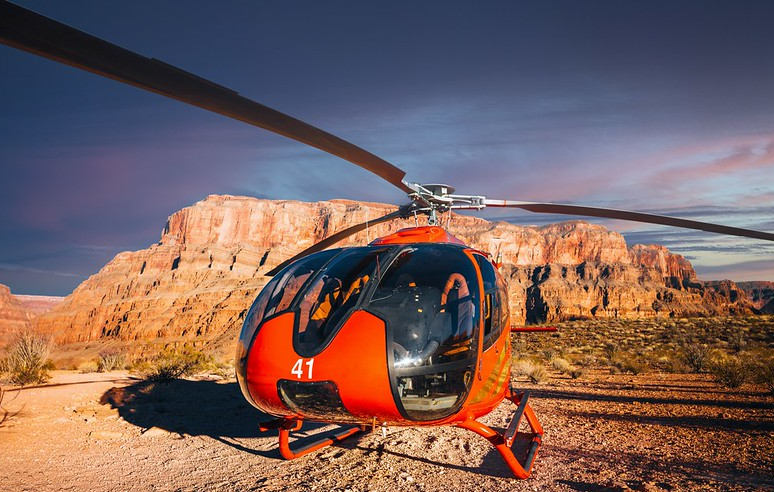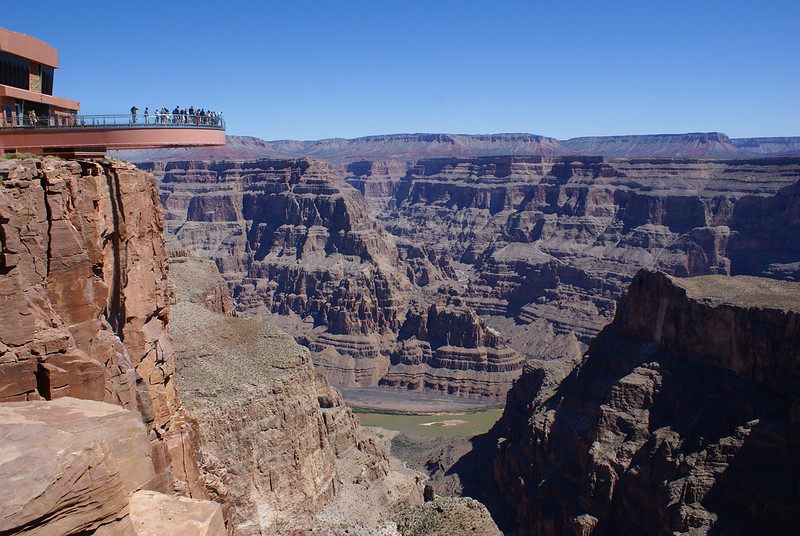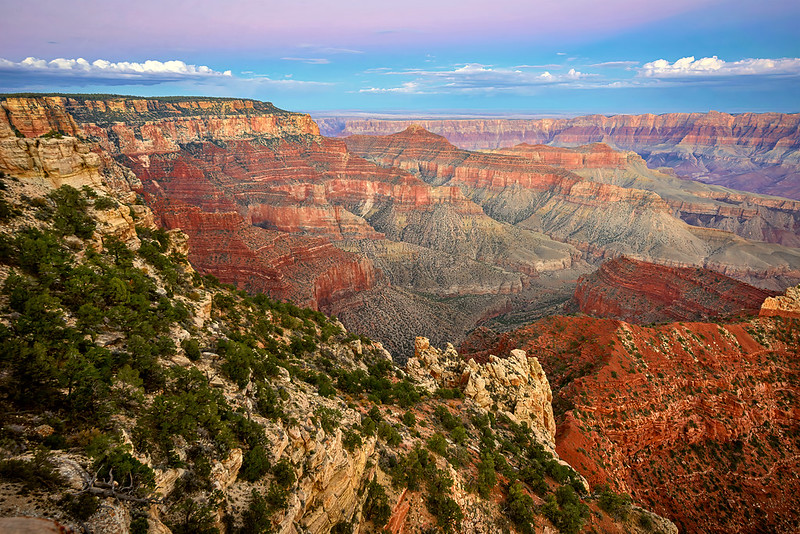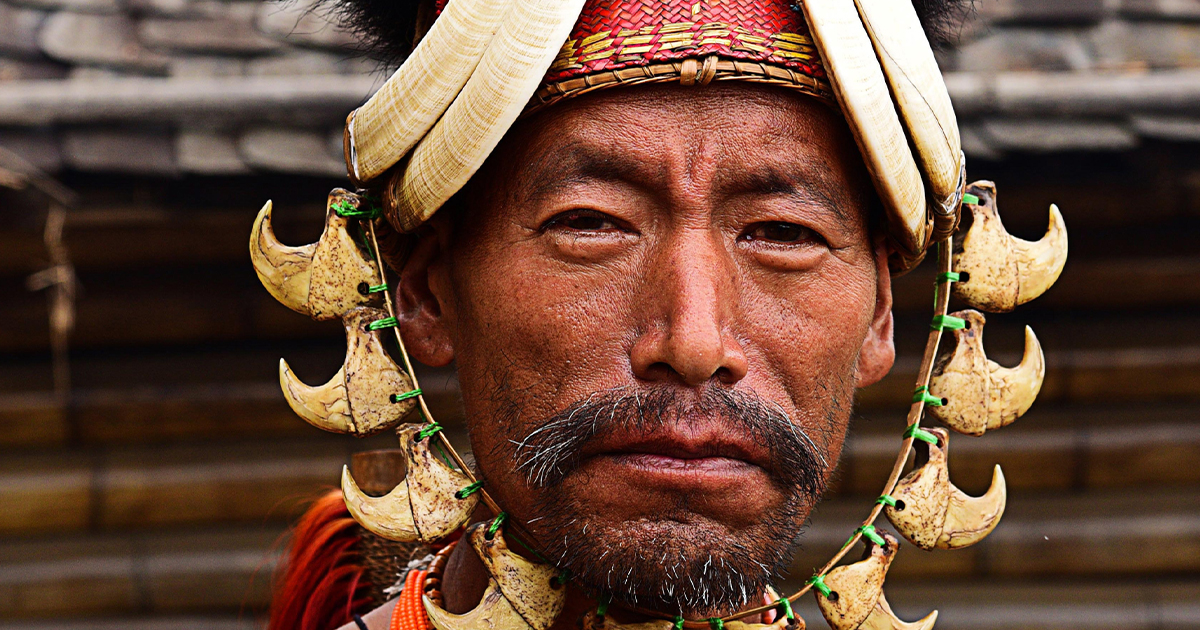The Grand Canyon: America’s Most Deadly National Park
The Grand Canyon is one of the Seven Wonders of the World, and one of America’s most popular tourist attractions.
Aside from its stunning natural beauty and historic landmarks, the Grand Canyon has also been officially named America’s Most Deadly National Park.
Let’s dive into the details and find out exactly what goes on deep inside the Grand Canyon.
Location
The Grand Canyon touches four states: Arizona, Nevada, Utah, and Colorado.
The most accessible and popular state to see the Grand Canyon is Arizona (South Rim) and Nevada (West Rim).
Brief History
The history of the Grand Canyon begins about six million years ago when the Colorado river slowly eroded the land beneath it forming the spectacularly deep canyon.
Spanish exploders discovered it way back in the 1540s.
Protected Status
The Grand Canyon became a protected forest reserve in 1893 at the orders of President Benjamin Harrison.
It became an official United States National Park in 1919.
 Pach Brothers, Wikimedia Commons
Pach Brothers, Wikimedia Commons
Size
Part of what makes the Grand Canyon so dangerous is its sheer size. The park sits on just over 1.2 million acres. It stretches more than 277 miles long, and 18 miles wide, with a whopping depth of 6,000 feet.
There’s plenty of space to get lost in.
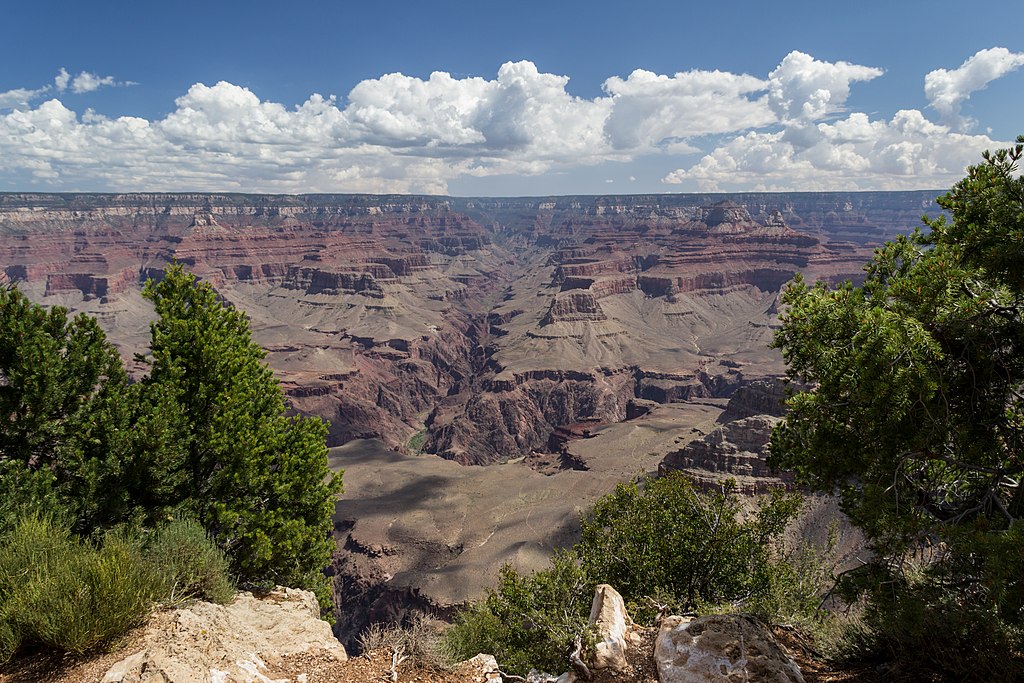 Dietmar Rabich, CC BY-SA 4.0, Wikimedia Commons
Dietmar Rabich, CC BY-SA 4.0, Wikimedia Commons
Popularity
Millions of people visit the Grand Canyon each year. From scenic drives to daring hikes, the park is loaded with opportunities for people of all ages to enjoy.
From 2019-2021 there were about 14 million visitors counted.
 Alex Proimos, CC BY 2.0, Wikimedia Commons
Alex Proimos, CC BY 2.0, Wikimedia Commons
Danger Status
In late 2023, an investigation done by the New York Post found it to be the deadliest national park in the country.
The Grand Canyon is said to have the most missing persons in the nation.
Missing Persons
According to the NY Post report, there have been at least 56 people missing from the Grand Canyon within the last five years.
 Freebilly Photography, Shutterstock
Freebilly Photography, Shutterstock
Missing Persons: Reports
Aside from the 56, there were also 1,100 missing persons reports filed from the Grand Canyon, with most of them being found eventually.
Many of those people were found injured and unwell.
Missing Persons: Reasons
Although the majority of people who go missing in the Grand Canyon are assumed to be from getting lost, there are many other reasons people go missing in the park, such as kidnapping, running away, and attempts at ending their lives.
Unsolved Missing Persons Cases
There are several unsolved missing persons cases that involve the Grand Canyon, here are three of them:
Mary Begay, 1957: A 20-year-old woman was seen getting into a vehicle with two men and hasn’t been seen since.
Justin Richardson, 2011: A 13-year-old boy had hiked into the woods with friends and became separated. He was never located.
Unsolved Missing Persons Cases: Continued
Adam Clayton Lyle Jones, 2011: A 23-year-old man’s belongings were found at the Visitor’s center. Evidence found itineraries for a road-trip, with the Grand Canyon being one of the places he set out to visit. He never returned to his vehicle and his body was never found.
What about the people who were found?
Fatalities
Over the years, there have been a concerning amount of people losing their lives within the boundaries of the Grand Canyon.
It’s an awful trend that has been steadily increasing since the park’s discovery.
Fatalities: History
Since the 1800s, there have been a thousand deaths confirmed. Considering records from that far back are difficult to find, authorities believe the actual number to be much higher.
Let’s take a closer look at recent years.
 Grand Canyon National Park's Photostream, Flickr
Grand Canyon National Park's Photostream, Flickr
Fatalities: Recent Years
In 2022, eleven people lost their lives while visiting the Grand Canyon—which is half of what the previous year experienced.
It may not sound like much, but keep reading, it gets worse.
 Grand Canyon National Park's Photostream, Flickr
Grand Canyon National Park's Photostream, Flickr
Fatalities: During the Pandemic
In 2020, during the pandemic, visitors dropped by more than half. However, the number of fatalities held strong at 17.
After the pandemic, visitors started flooding into the park once again, and the fatalities jumped to 23 in 2021.
 Grand Canyon National Park's Photostream, Flickr
Grand Canyon National Park's Photostream, Flickr
Fatalities: Average
On average, there are 12 fatalities every year. Since 2008, the number of fatalities has never gone below 10.
The odds of falling off the rim of the Grand Canyon are 1 in 1.8 million visitors. So, what else causes all these fatalities?
 Grand Canyon National Park, CC BY 2.0, Wikimedia Commons
Grand Canyon National Park, CC BY 2.0, Wikimedia Commons
How It Happens
According to data collected, there are several different ways that people lose their lives at the Grand Canyon—surprisingly, falling from the edge is not number one.
 Grand Canyon National Park's Photostream, Flickr
Grand Canyon National Park's Photostream, Flickr
Airplane & Helicopter Crashes
A total of 379 people have lost their lives in the Grand Canyon in airplane and helicopter crashes.
Aside from one major incident that claimed the lives of over 100 people, aircraft crashes still remain the most common cause of death in the Grand Canyon.
1956 Airplane Crash
In 1956, two commercial airplanes collided in mid-air over the canyon. Every single person aboard both airplanes lost their lives, totaling 128 people.
 Jérôme, CC BY-SA 3.0, Wikimedia Commons
Jérôme, CC BY-SA 3.0, Wikimedia Commons
1956 Airplane Crash: What Happened
Both planes were carrying passengers from California to the Midwest. The pilots were given permission to fly over the Grand Canyon as a “scenic route”, but were managing their own flight paths.
This horrific event is what led to the creation of the Federal Aviation Administration (FAA).
 MeRyan, CC BY 2.0, Wikimedia Commons
MeRyan, CC BY 2.0, Wikimedia Commons
1986 Helicopter Crash
In 1986, an airplane and a helicopter collided while on sight-seeing tours, and all 25 people aboard lost their lives.
 Nevada Tourism Media Relations, Flickr
Nevada Tourism Media Relations, Flickr
1986 Helicopter Crash: What Happened
It was not determined how the pilots did not see each other before colliding, but investigations revealed that too many tours were flying over the same parts at the same time.
To date, this is the deadliest helicopter accident in the United States.
 Grand Canyon National Park's Photostream, Flickr
Grand Canyon National Park's Photostream, Flickr
Aircraft Tours
Hundreds of thousands of visitors partake in aircraft tours over the Grand Canyon each year. There are two flights per minute, on average.
Most accidents occur with tour companies who have inexperienced pilots. The National Park Service hasn’t had an aerial accident in over 40 years.
Falling Fatalities
It is assumed that falling is the leading cause of death at the Grand Canyon, and while it may not actually be number one, it is definitely number two.
It is important to note that the exact number is difficult to track as not everyone who comes into the park is counted, and solo hikers are not tracked.
Falling Fatalities: Details
There have been 123 reported fatal falls at the Grand Canyon.
Falls off the ledge: 60
Fallen from inside the canyon: 63
 Grand Canyon National Park, CC BY 2.0, Wikimedia Commons
Grand Canyon National Park, CC BY 2.0, Wikimedia Commons
Environmental Fatalities
Environmental factors are a common cause of fatalities at the Grand Canyon. Many hikers are not prepared for the escalating elements within the park.
This includes high and low temperatures, weather conditions, and even starvation.
 Grand Canyon National Park, CC BY 2.0, Wikimedia Commons
Grand Canyon National Park, CC BY 2.0, Wikimedia Commons
Dehydration
Temperatures in the Grand Canyon can reach extreme highs and lows. In the summer, temperatures reach 120 degrees Fahrenheit at the bottom of the canyon—leading to dehydration quickly.
Around 100 people have lost their lives after going into cardiac arrest resulting from dehydration.
 Terry Eiler, Wikimedia Commons
Terry Eiler, Wikimedia Commons
Overhydration
A lesser-known cause is overhydration—when people drink too much water, thinking they need it, and consuming too little food. This causes sodium in the blood to drop to dangerously low levels, leading to fatal consequences.
 Grand Canyon National Park, CC BY 2.0, Wikimedia Commons
Grand Canyon National Park, CC BY 2.0, Wikimedia Commons
Starvation
As with all fatalities at the Grand Canyon, this number is difficult to determine as there are many bodies at the bottom of the canyon that have yet to be discovered.
It is assumed that many lost hikers suffer starvation in their final days.
 Dirk DBQ, CC BY 2.0, Wikimedia Commons
Dirk DBQ, CC BY 2.0, Wikimedia Commons
Starvation: Evidence
Some hikers have left behind notes that are found with their skeleton, stating “4 days without food or water. Lost.”
Some notes have also been found flying around the park, with no bodies to match them with.
 Grand Canyon National Park's Photostream, Flickr
Grand Canyon National Park's Photostream, Flickr
Freezing
During the winter months, hikers are often unprepared for sudden changes in weather. At higher elevations there can be intermittent snowstorms that alter both the trails and the temperatures.
Frozen bodies of lost hikers have been found.
 Grand Canyon National Park's Photostream, Flickr
Grand Canyon National Park's Photostream, Flickr
Flash Floods
The Grand Canyon is in the desert, meaning there is not much vegetation to soak up accumulated water. So, when it does rain, water flows quickly across the soil, causing flash floods in the side canyons.
 Grand Canyon National Park's Photostream, Flickr
Grand Canyon National Park's Photostream, Flickr
Flash Floods: Fatalities
Unsuspecting hikers can be instantly swept away to places they cannot recover from.
In 1997, two people drowned in a flash flood, while their hiking partners painfully watched them be swept away.
 Grand Canyon National Park's Photostream, Flickr
Grand Canyon National Park's Photostream, Flickr
Lightening
Only an hour after the flash flood drownings, two other visitors were struck by lightning. Reports state that lightning strikes an average of 25,000 times per year at the Grand Canyon.
 Grand Canyon National Park's Photostream, Flickr
Grand Canyon National Park's Photostream, Flickr
Drowning Fatalities
There are dozens of water activities enjoyed in the Colorado River, including boating, swimming, river rafting and waterfall excursions.
But many visitors underestimate the power of the river.
 Grand Canyon National Park's Photostream, Flickr
Grand Canyon National Park's Photostream, Flickr
Drowning Fatalities: How It Happens
Back before bridges were built, many people drowned just trying to cross the river. Others were unexpectedly swept away in the current while simply cooling off in the river.
Drowning fatalities are estimated at around just over 100.
Notable Drowning Incident of 1928
In 1928, a couple of newlyweds named Bessie and Glen Hyde were rafting down the river, attempting to make a new record for fastest time through the canyon.
Bessie would have been the first woman to raft through the canyon.
Notable Drowning Incident of 1928: Unsolved Mystery
The newlyweds never made it to the end, and their bodies were never found.
Rumor has it that Bessie survived, and had purposely staged the incident to end her husband’s life. However, the mystery remains unsolved.
 Paxson Woelber, CC BY 2.0, Wikimedia Commons
Paxson Woelber, CC BY 2.0, Wikimedia Commons
Slayings
Realistically speaking, the Grand Canyon is a convenient place to take someone’s life and stage it as an accident.
Approximate 40 fatalities have been confirmed as purposeful, and at the hands of another person.
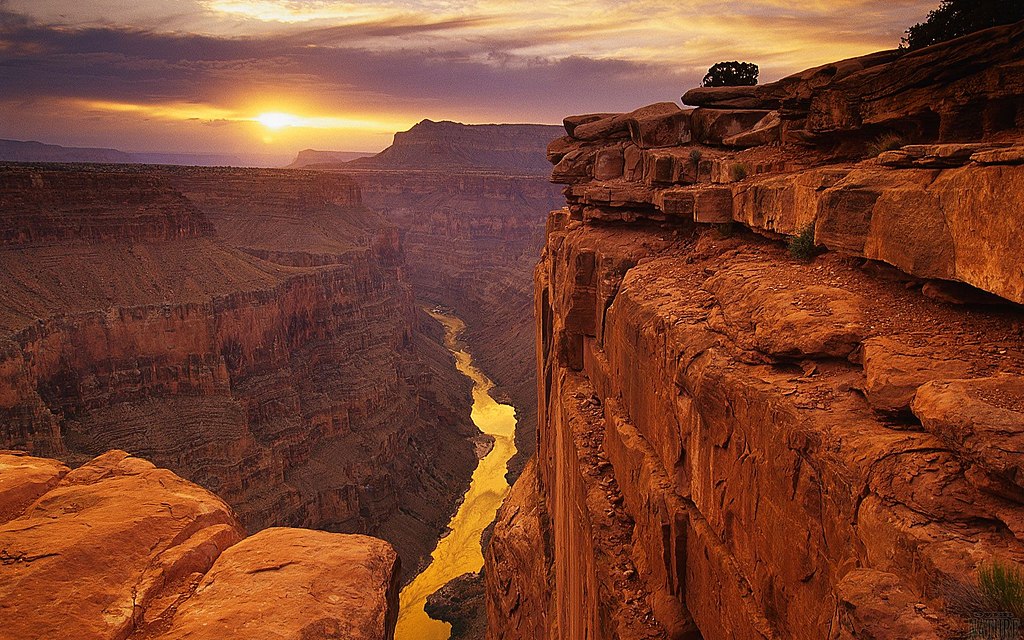 PradeepBisht, CC BY-SA 4.0, Wikimedia Commons
PradeepBisht, CC BY-SA 4.0, Wikimedia Commons
Slayings: Robert Spangler
In 1993, Robert Spangler, later recognized as a confirmed serial-slayer, took his third wife to the Grand Canyon and pushed her off a 160-foot cliff.
At the time it was ruled an accident, but he later confessed to the incdent.
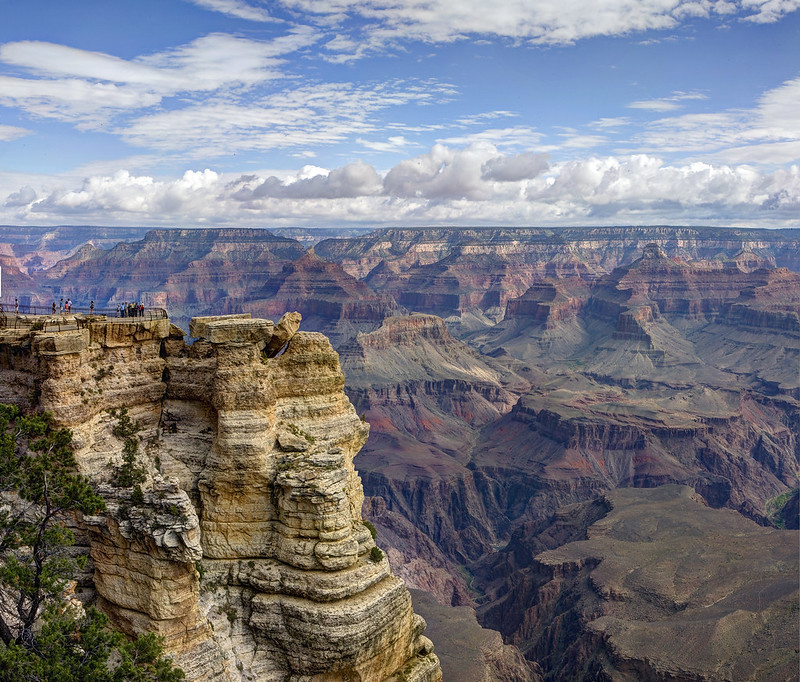 U.S. Department of the Interior, Flickr
U.S. Department of the Interior, Flickr
Slaying: Mr. & Mirs. Sherman
In 1977, newlyweds Michael and Charlotte Sherman were found unalive by hikers. They had been shot. Investigators assume it was a robbery gone wrong.
 MichaelKirsh, CC BY-SA 4.0, Wikimedia Commons
MichaelKirsh, CC BY-SA 4.0, Wikimedia Commons
Self-harm
An estimated total of 91 people have taken their own lives at the Grand Canyon, and in many different ways.
Seventy-five people have reportedly jumped to their demise off the edges of cliffs, and another 13 people have driven off the edge in their car.
Self-harm Notable Incidents of 1993
In 1993 alone, three different people drove their vehicles off the edge of the Grand Canyon.
These incidents happened shortly after the movie Thelma and Louise premiered—where the main characters drove off the edge of a cliff at the end of the movie.
 carfull...from Wyoming, Flickr
carfull...from Wyoming, Flickr
Self-harm Incidents
Aside from jumping, other people have taken their own lives by jumping off bridges, jumping out of helicopters, and using firearms.
Some people have left notes to explain, others had witnesses.
 Don Graham, CC BY-SA 2.0, Wikimedia Commons
Don Graham, CC BY-SA 2.0, Wikimedia Commons
Car Accidents
There isn’t a whole lot of data to support car accidents that happen at the Grand Canyon, but it is worth noting as a common cause of fatalities.
There were three notable incidents in recent years that occurred on roadways within the park.
Car Accidents: Notable Incident 2023
In February of 2023, two visitors from Portugal lost their lives while on vacation at the Grand Canyon. They were backseat passengers and not wearing their seatbelts.
The vehicle collided with a bus and rolled over. The passengers on the bus were not injured.
 Grand Canyon National Park's Photostream, Flickr
Grand Canyon National Park's Photostream, Flickr
Car Accidents: Notable Incident 2022
In 2022, a woman suffered fatal injuries when her vehicle crashed into a tree near the South Entrance Station.
 Grand Canyon National Park, CC BY 2.0, Wikimedia Commons
Grand Canyon National Park, CC BY 2.0, Wikimedia Commons
Car Accidents: Notable Incident 2014
Back in 2014, two vehicles collided on South Entrance Road, only 3 miles from the entrance, resulting in fatalities of all passengers involved.
 Grand Canyon National Park's Photostream, Flickr
Grand Canyon National Park's Photostream, Flickr
Unusual Fatalities: Fear
Believe it or not, in 1933 a 43-year-old man—who was terrified of snakes—met a rattlesnake on the trail. When the snake coiled and made a partial attack, the man was so scared that he leapt back in fear and ended up experiencing heart failure in that moment, and did not survive.
Sadly, his family were witnesses to the incident.
 Paxson Woelber, CC BY 2.0, Wikimedia Commons
Paxson Woelber, CC BY 2.0, Wikimedia Commons
Unusual Fatalities: Rock Falls
It is estimated that around eight people have lost their lives in the Grand Canyon from rockfalls. One woman narrowly escaped fatal bleeding when a rock fell on her tent and crushed her pelvis. Thankfully, she was saved.
 Grand Canyon National Park's Photostream, Flickr
Grand Canyon National Park's Photostream, Flickr
Unusual Fatalities: Parachuting
In 1993, two people risked their luck when they parachuted off the edge of the Grand Canyon into the Little Colorado River Gorge.
Unfortunately, they were too close together when they jumped and their parachutes became entangled. They hit the rocks 900 feet below at high speed. Only one of them survived.
 Grand Canyon National Park's Photostream, Flickr
Grand Canyon National Park's Photostream, Flickr
The Unknown Numbers
The numbers are scary, but is even more terrifying is how many unknowns there are.
Unless witnesses are present when someone goes over the edge, the bodies can go undiscovered for a very, very long time.
The Unknown Numbers: Example
In 2021, the remains of a 56-year-old man were found. He had been missing since 2015.
 Islander61, CC BY-SA 4.0, Wikimedia Commons
Islander61, CC BY-SA 4.0, Wikimedia Commons
The Unknown: Human Remains
As well, human remains found in the canyon cannot always be identified and properly linked to a missing person.
There are often skeletons found in heavily wooded areas that had obviously been there for long periods of time, making it difficult to determine the cause of their demise.
 Mferbfriske, CC BY-SA 2.0, Wikimedia Commons
Mferbfriske, CC BY-SA 2.0, Wikimedia Commons
Known Incidents in 2023
There were apparently 11 fatalities at the Grand Canyon in 2023. Here are seven of those incidents:
11/16/23: A 65-year-old man from Oracle was hiking from the South Rim to the river and back when he was found unresponsive.
9/9/23: A 55-year-old man from Virginia was attempting to hike from the South to North Rim in a single day when he collapsed and became unresponsive.
 Grand Canyon National Park's Photostream, Flickr
Grand Canyon National Park's Photostream, Flickr
Known Incidents in 2023: Continued
8/1/23: One person lost their life and over 50 others were injured when a bus rolled over at Grand Canyon West.
7/2/23: A 57-year-old woman was doing an 8-mile hike when she fell unconscious and passed from the extreme temperatures, which had reached over 100 degrees.
Known Incidents in 2023: Continued
6/5/23: A 33-year-old man ended his own life after jumping off the edge of the Sky Walk, falling 4,000 feet into the canyon at Grand Canyon West.
5/21/23: A 36-year-old woman from Indiana was attempting to do a day hike to the Colorado River when she collapsed on the trail.
2/17/23: A 56-year-old man from Wisconsin was found unalive on the Bright Angel Trail below Havasupai Gardens. He was attempting a day hike from the rim to the Colorado River and back.
Known Incidents in 2022
There were 11 fatalities at the Grand Canyon National Park in 2022. Here are nine of the incidents:
12/3/22: A 54-year-old man lost his life in a rappelling accident while canyoneering. This type of activity is normally done in a group due to the danger, but this man was on a solo trip. Park officials found his abandoned campsite and vehicle and began a search until they found his body.
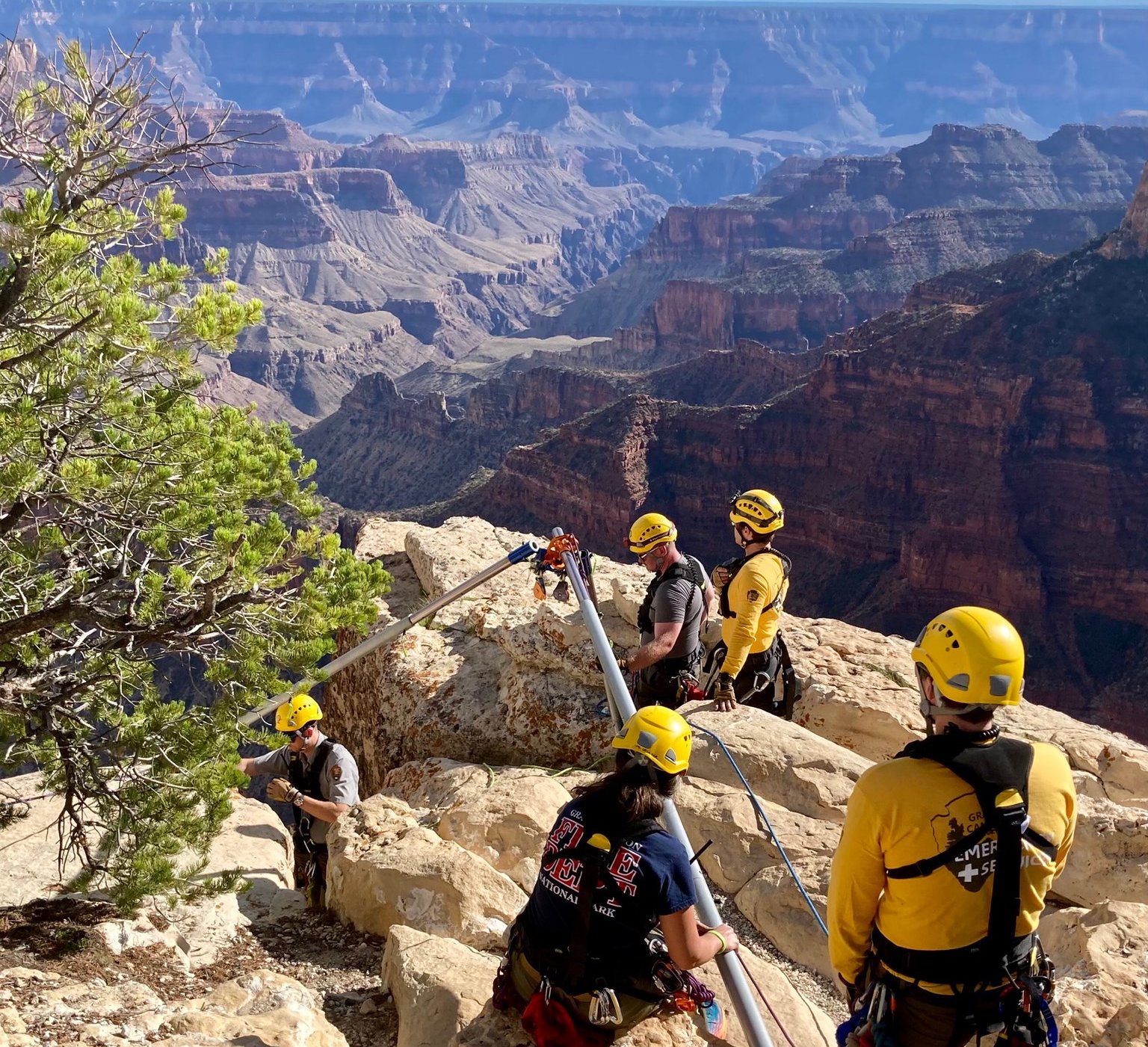 Grand Canyon National Park's Photostream, Flickr
Grand Canyon National Park's Photostream, Flickr
Known Incidents in 2022: Continued
9/10/22: A 67-year-old man fell off a boat and into the Colorado River. Members of his group pulled him out of the water and began CPR but he could not be resuscitated. Four others on the boat sustained nonfatal injuries.
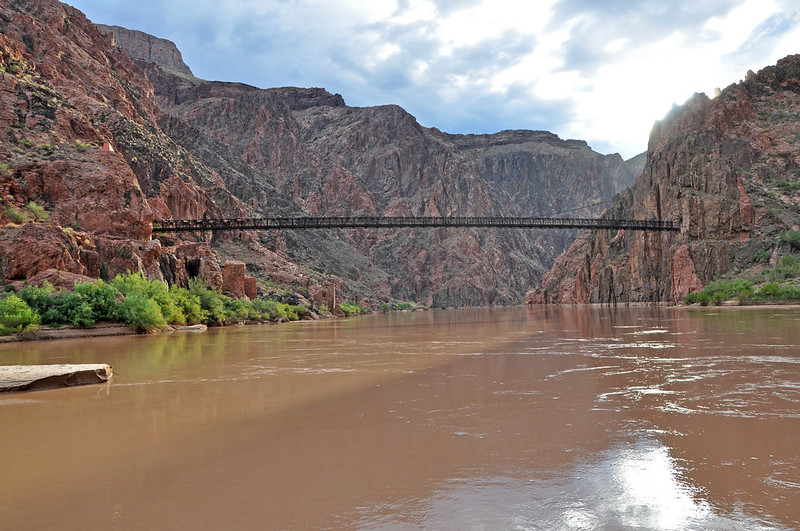 Grand Canyon National Park's Photostream, Flickr
Grand Canyon National Park's Photostream, Flickr
Known Incidents in 2022: Continued
8/26/22: A 44-year-old man fell 200 feet from the rim west of the Bright Angel Point Trail on the North Rim. He was off trail when he accidentally fell off the edge.
9/4/22: A 59-year-old woman from Arizona lost her life hiking Thunder River Trail. She became disoriented and fell unconscious while on a multi-day backpacking trip. It was over 100 degrees out that day. Attempts to revive her were unsuccessful.
 Grand Canyon National Park's Photostream, Flickr
Grand Canyon National Park's Photostream, Flickr
Known Incidents in 2022: Continued
8/26/22: A 44-year-old man was allegedly off the trail when he accidentally slipped off the North Rim edge and fell to his demise. His body was found 200 feet below near the Bright Angel Trail.
6/11/22: A 47-year old woman from Chicago fell into the Colorado River during a commercial river trip. She was cooling off along Pipe Creek Beach, when she was caught by the current.
 Grand Canyon National Park's Photostream, Flickr
Grand Canyon National Park's Photostream, Flickr
Known Incidents in 2022: Continued
6/2/22: A 41-year-old woman from Canada was found unresponsive on the Bright Angel Trail. Bystanders attempted CPR and were soon assisted by the National Park Service, but the hiker did not make it. It was 104 degrees out.
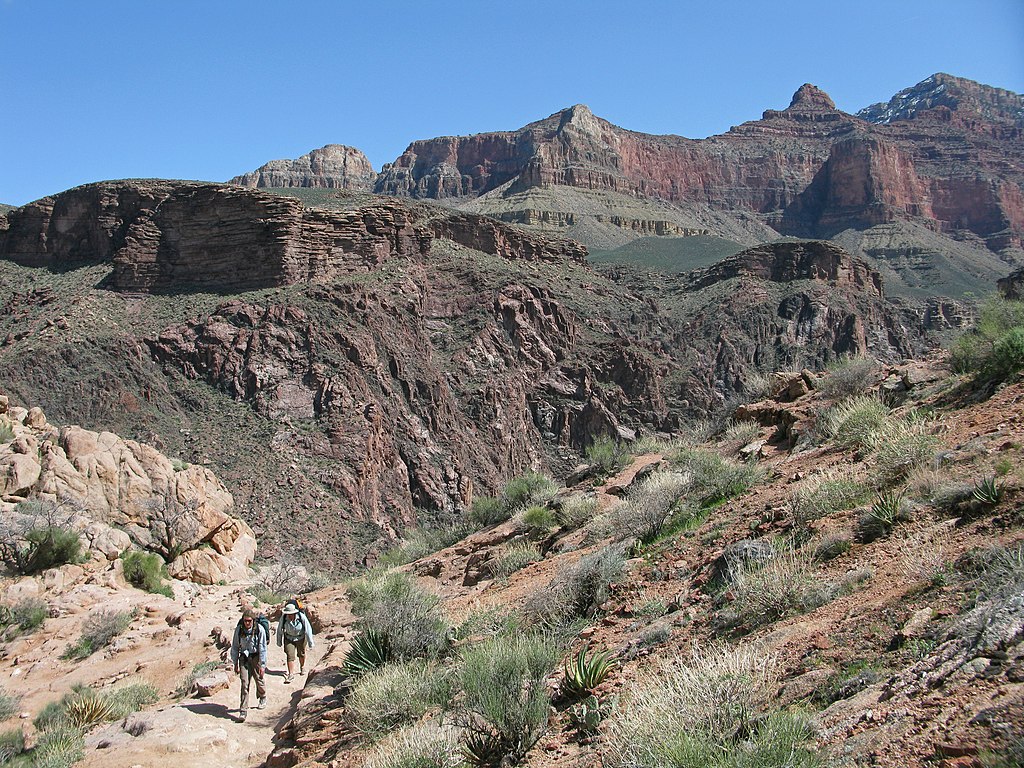 Grand Canyon National Park, CC BY 2.0, Wikimedia Commons
Grand Canyon National Park, CC BY 2.0, Wikimedia Commons
Known Incidents in 2022: Continued
4/4/22: A 34-year-old woman from Utah lost her life after falling from a private boating trip. She fell 20 feet near the Ledges Camp along the Colorado River and sustained fatal injuries.
She was on day six of her trip, and had hiked into the canyon to meet her group when she fell. People administered CPR but no luck.
 Grand Canyon National Park's Photostream, Flickr
Grand Canyon National Park's Photostream, Flickr
Known Incidents in 2022: Continued
3/24/22: A 68-year-old woman from Colorado fell overboard while whitewater rafting, nine days into her trip. She fell near Hance Rapid in the Colorado River, and people pulled her out and attempted CPR, but sadly, she did not make it.
 Grand Canyon National Park's Photostream, Flickr
Grand Canyon National Park's Photostream, Flickr
Demographics
The two demographics most likely to lose their lives at the Grand Canyon are young, and male. This assumption is made on the grounds that men typically take bigger risks.
Of 55 people who accidentally fell from the Grand Canyon, 39 of them were male. Eight of them were hopping along the rocks and lost footing, or posing for pictures.
Another Notable Incident: Risk Takers
A 38-year-old man from Texas was playfully hopping along the rocks, pretending to scare his daughter when he lost his footing and really did fall 400 feet to his demise.
 Grand Canyon National Park's Photostream, Flickr
Grand Canyon National Park's Photostream, Flickr
Safety Tips: Trails and Water
Although it is clear that the Grand Canyon can be a dangerous place, there are still millions of visitors each year. For those visitors, it is important to take precautionary steps to stay safe.
Stay on Designated Trails: Venturing off-trail risks getting lost, or falling from unstable ledges.
Bring Plenty of Water: Dehydration is a serious risk at the Grand Canyon. Sweating is very common. Bring lots of water, and eat salty snacks throughout your day.
 Grand Canyon National Park's Photostream, Flickr
Grand Canyon National Park's Photostream, Flickr
Safety Tips: Weather
Dress Appropriately: Dress for the weather, and the terrain. Wear layers so you can add or take off, and wear sturdy hiking shoes. Hats, sunglasses and sunscreen are also recommended.
Check the Weather Forecast: Always check the weather forecast before your trip so you can avoid flash floods, extreme heat, and snowstorms.
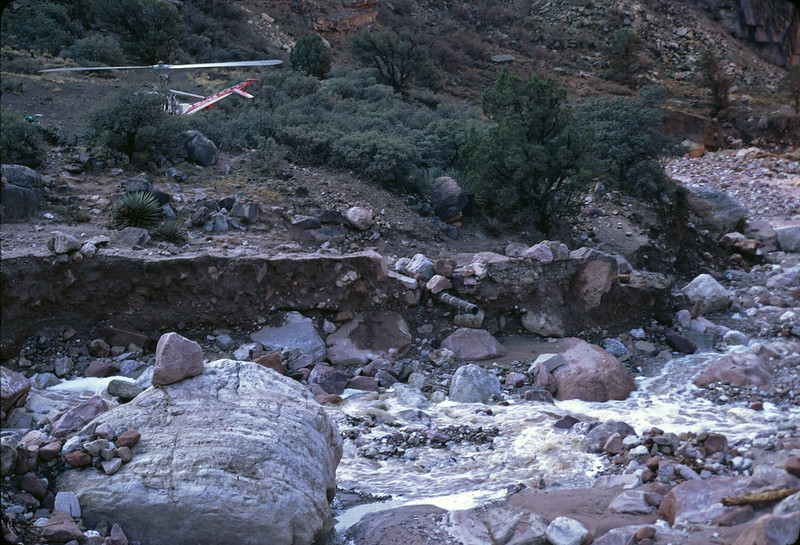 Grand Canyon National Park's Photostream, Flickr
Grand Canyon National Park's Photostream, Flickr
Safety Tips: Travel Tips
Travel in Groups: Traveling in groups can reduce the risk of getting lost, or experiencing accidents while hiking. Bring a friend, or join a guided tour.
Bring a Map and Compass: Getting lost is a serious concern at the Grand Canyon. Be prepared by knowing your route. GPS devices are not always accurate in some spots of the park, so a paper map is suggested.
 Grand Canyon NPS, CC BY 2.0, Wikimedia Commons
Grand Canyon NPS, CC BY 2.0, Wikimedia Commons
Final Thoughts
As horrifying as the numbers in this article may be, we hope it does not discourage anyone from visiting the stunning landscapes of the Grand Canyon National Park, one of the Seven Wonders of the World.
Just be sure to adhere by all safety protocols, and make smart decisions.










